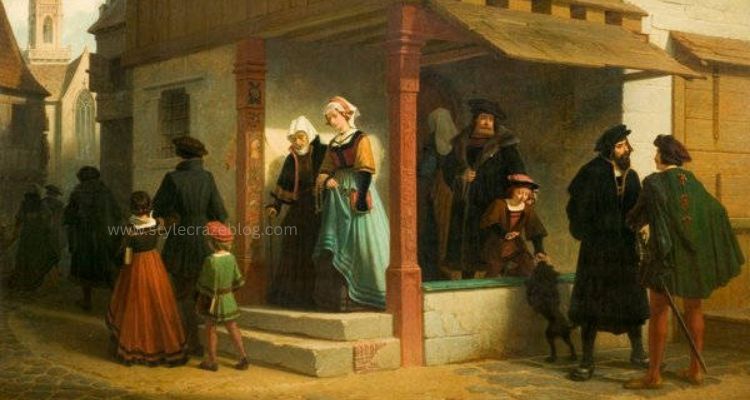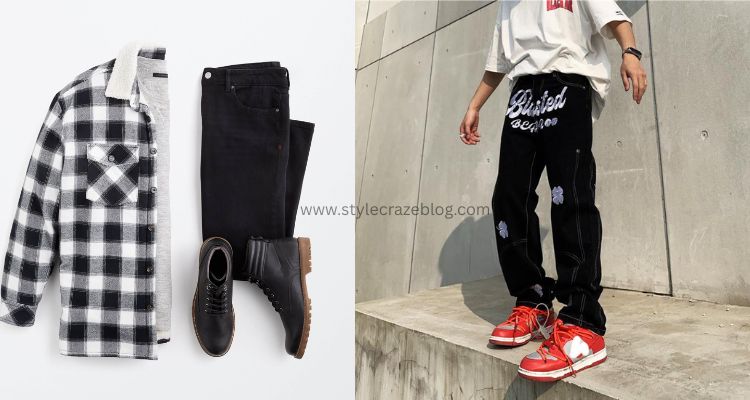When we talk about 16th century clothing, we step into a time of drama, richness, and symbolism. This was the Renaissance era, when fashion wasn’t just fabric—it was identity and power. I remember visiting a museum in Florence where I stood in front of an ornate doublet and gown. They weren’t just clothes. They were statements meant to be read by everyone around you.
What Did They Wear in the 16th Century?
In the 1500s, fashion varied across Europe but shared common themes: luxury, structure, and layers. 16th century men’s clothing included doublets, hose (tight-fitting trousers), and cloaks. Stiff ruffs framed faces dramatically. Wealthy men showed status through embroidery, jewels, and elaborate fabrics like velvet or brocade.
Women’s attire was equally commanding. 16th century women’s clothing often involved bodices with tight lacing, farthingales (hooped skirts), and flowing gowns with fitted sleeves. Rich fabrics signaled rank, and modesty mixed with grandeur.
When I tried on a replica gown at a history fair, I realized how heavy these clothes were. Just standing upright felt like work, yet it gave this sense of elegance I hadn’t felt before. That’s the magic of 16th century clothing—it forces posture, presence, and pride.
What Was Elizabethan Fashion?
Elizabethan fashion, late in the century, built upon Renaissance luxury. Men wore padded doublets and trunk hose shaped into globes. Lace collars and cuffs became highly detailed.
For women, dresses emphasized long bodies with stiff corsets. Farthingales created wide silhouettes, while elaborate embroidery decorated every hem. Pearls, ribbons, and jewels added sparkle. Hairstyles grew taller, and cosmetics like pale powders enhanced the grand look.
Just imagine walking into Queen Elizabeth I’s court. 16th century clothing wasn’t optional—it was a political language. Clothing told others of your wealth, your ties, and even your loyalty.
What Are Some Iconic 1600s Fashion Trends?
The late 16th century flowed naturally into iconic 1600s fashion trends. The ruff evolved into wide lace collars. Doublets became longer, and skirts grew even fuller. Silk stockings for men and ribboned shoes became marks of status.
One trend I love is the theatrical layering. You’d see sleeves slashed open to reveal contrasting fabrics underneath. It’s like people wore fashion not just to impress but to entertain. Even today, designers borrow from these silhouettes, re-creating the drama for runways.
What Is the Oldest Piece of Clothing?
Talking about history often leads to curiosity: what is the oldest piece of clothing? The oldest known garment is the Tarkhan Dress, an Egyptian linen tunic dating back over 5,000 years. Compared to 16th century clothing, it was simple—no ruffs, no jewels.
But its survival shows us that people have always expressed themselves through fabric. When I learned about it, I was amazed. A single dress can connect us across thousands of years, just like how a doublet or gown from the 1500s connects us to the Renaissance.
Regional Flavors: Spanish and German Styles
Spain and Germany gave their own touch to 16th century clothing. 16th century Spanish clothing favored dark colors, stiff collars, and heavily jeweled gowns. It reflected Catholic influence—formal, modest, and controlled. The “Spanish black” look became a European trend.
On the other hand, 16th century German clothing leaned more toward slashing and puffing. Bright fabrics poked out from openings, making outfits bold and eye-catching. Doublets, breeches, and gowns all showed contrast between structure and vibrancy.
Walking past portraits from Spain and Germany, you immediately see the difference. Spain looks disciplined and regal. Germany feels flamboyant and daring. That variety makes studying 16th century clothing so exciting.
Final Thoughts
16th century clothing wasn’t just about fashion. It was about making a statement. Men strutted in doublets and ruffs while women displayed grace in corsets and towering gowns. Spanish restraint contrasted with German boldness, making the century a tapestry of expression.
When I think of the 1500s, I don’t just remember gowns or collars. I remember how clothing reflected society’s values—power, class, religion, and art. Trying on replicas, or even seeing them in portraits, gives us a glimpse into how people wanted the world to see them.
The Renaissance left its mark not just in art and culture, but in fabric and thread. And that’s why the 16th century clothing continues to fascinate us today.



